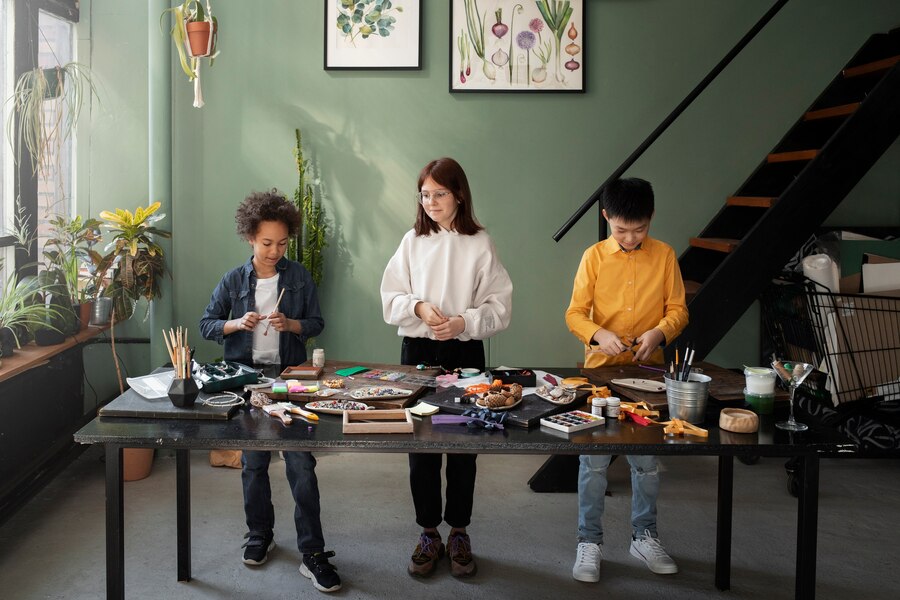Creativity is a vital component of innovation and growth in any business. A creative team can generate fresh ideas, solve complex problems, and adapt to changing market conditions. However, fostering creativity requires intentional strategies and a supportive environment. Here are effective ways to encourage creativity within your business team.
1. Create a Stimulating Environment

The physical workspace significantly impacts creativity. Design an office that inspires innovation by incorporating colors, comfortable furniture, and collaborative spaces. Consider establishing a dedicated creative area where team members can brainstorm and exchange ideas freely, away from their usual workstations. This change of scenery can spark new thoughts and encourage collaboration.
2. Encourage Open Communication
Fostering an open dialogue among team members is crucial for creative expression. Create a culture where all ideas are welcomed and valued, regardless of their source. Encourage active listening and constructive feedback during discussions. When team members feel safe to share their thoughts without fear of criticism, they are more likely to contribute innovative ideas.
3. Allow for Flexibility
Flexibility in work arrangements can enhance creativity. Allow employees to choose where and when they work, as this autonomy can lead to increased motivation and inspiration. Some individuals may find they think more creatively in a relaxed home environment or during non-traditional hours. Providing this flexibility shows trust in your team’s ability to manage their time effectively.
4. Implement Brainstorming Sessions
Regular brainstorming sessions can be an effective way to generate new ideas collectively. Set ground rules that encourage free thinking—no idea is too outlandish during these sessions. Use techniques like mind mapping or free writing to stimulate creative thinking. Remember to document all ideas generated, as even the most unconventional suggestions can lead to valuable insights.
5. Promote Psychological Safety
Creating an atmosphere of psychological safety is essential for fostering creativity. Team members should feel comfortable taking risks and making mistakes without fear of negative repercussions. Encourage experimentation and view failures as learning opportunities rather than setbacks. Celebrating both successes and failures reinforces a culture that values innovation.
6. Encourage Continuous Learning
Investing in your team’s development fosters creativity by exposing them to new ideas and perspectives. Offer training programs focused on creative thinking, problem-solving, or design thinking methodologies. Encourage employees to pursue interests outside of work that can inspire fresh ideas, such as workshops or courses in unrelated fields.
7. Celebrate Creativity
Recognizing and rewarding creative efforts motivates team members to continue thinking outside the box. Celebrate innovative projects or unique solutions with public acknowledgment or incentives. This recognition not only boosts morale but also reinforces the importance of creativity within your organization.
Conclusion
Fostering creativity within your business team is essential for driving innovation and maintaining a competitive edge in today’s dynamic market. By creating a stimulating environment, encouraging open communication, allowing flexibility, promoting psychological safety, and celebrating creative efforts, you empower your team to think outside the box and contribute meaningfully to your organization’s success. Embrace these strategies to cultivate a culture of creativity that not only enhances productivity but also inspires continuous improvement.
FAQs
Q: What is the importance of fostering creativity in teams?
A: Fostering creativity leads to innovative solutions, improved problem-solving capabilities, enhanced adaptability, and increased employee engagement.
Q: How can I create a psychologically safe environment?
A: Encourage open communication, actively listen to team members, provide constructive feedback, and celebrate both successes and failures without punishment.
Q: What types of activities promote creativity?
A: Activities such as brainstorming sessions, workshops on creative thinking, team-building exercises, and informal gatherings can stimulate creativity.
Q: How often should brainstorming sessions be held?
A: Regularly scheduled brainstorming sessions—such as monthly or quarterly—can help maintain a continuous flow of ideas while allowing for flexibility based on project needs.
Q: Can creativity be measured?
A: While measuring creativity can be challenging, you can evaluate the effectiveness of creative initiatives through project outcomes, employee feedback, and innovation metrics.
